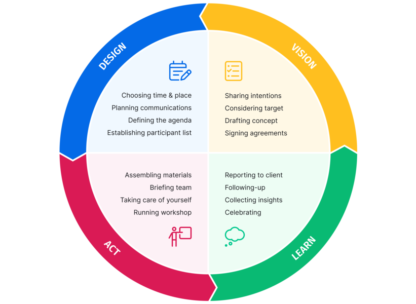
Until early 2016 no one except researchers knew about psychological safety. Then in February, The New York Times published a piece on the aforementioned Google research called “Project Aristotle” and booom! Psychological safety immediately became the “it” concept among human resource experts and organizational psychologists.
No wonder though… Research showed that high psychological safety fosters organizational learning, innovation and innovative behaviour, creativity and risk-taking, just the types of behaviour that lead to novel ideas, proactivity, and thriving teams and organizations.
So, what is psychological safety anyway?
Amy Edmondson, who was among the first to research the concept, defined psychological safety as a shared belief that the team is safe for interpersonal risk-taking. This belief, however, tends to be tacit – something that is taken for granted.
When psychological safety is high in a team, everyday work and behaviors lead to seeking feedback, reporting mistakes, and frequently proposing new ideas with the understanding that if someone puts himself on the line, other’s will respond positively.
In contrast, if psychological safety is low in a team, members avoid engaging in the above-mentioned behaviours since they would not know how others would react. Ultimately, we all try hard to avoid being criticized, embarrassed or hurt.
Keeping in mind all the benefits of psychological safety, the important question becomes how to elicit psychological safety in teams.
Several techniques have emerged from studies; however, this being a fairly new concept to both psychologists and researchers, more studies and empirical testing are needed to determine the best approaches.
Here we list some of the most frequently mentioned factors that boost psychological safety in the workplace.
Choose the right leaders
Leaders have a great impact on the culture of the organization. They are often viewed as role models by their co-workers and teams, thus they have a direct influence on what actions are considered appropriate and are expected from members.
This means leaders, especially team leaders and middle managers, play a big role in creating psychological safety in teams. While observing teams, Amy Edmondson identified 3 behaviours that foster psychological safety:
- Being approachable. If leaders make themselves available for discussions, open their offices to team members, and engage in formal and informal conversations, they actively reduce in-group barriers that might prohibit open communication.
- Being open to input. In the same manner, when leaders ask for team members’ input, it greatly enhances psychological safety. Giving and receiving feedback on a regular basis shows team members that their opinions are valuable and respected.
- Modeling fallibility. Leaders form the work culture and serve as models of acceptable behaviour for team members. If mistakes are swept under the rug or worse, punished, the team is likely to mimic the same behaviour. However, if leaders are open and honest about making mistakes and discuss them with the team, other team members will not be afraid to admit their own mistakes, thus creating a safe, trusting and open atmosphere.
Create trusting interpersonal relationships
If you were to make a big mistake, would you rather admit it to a team that trusts and respects you or to a team that questions your capabilities? Those teams that maintain a supportive, trusting atmosphere where members are respected report a higher feeling of psychological safety.
Want to go even further? Try using some of our great team building activities to create even deeper interpersonal relationships!
Make sure to speak the same amount
This may sound obvious, but more often than not people tend to stay in the background and keep silent, even when they do not agree with decisions and especially when a leader is imposing or forceful from the start.
However, ensuring that everyone’s voice is heard and every opinion is taken into consideration enhances the feeling of psychological safety as illustrated by Google’s research of the perfect team. Even if this means meetings last a little longer, it’s worth the time.
Empathize
Being able to empathize with others around us is a great ability and a key component of human behaviour. But when conflicts arise, we tend to concentrate only on ourselves, our points, and our own arguments. We need to feel safe.
But to have a constructive discussion,our partner, or the other team, needs to feel psychologically safe too. The next time when arguing over something use empathy to stop and think through the similarities between you and your partner. What would be considered a win-win situation for both of you?
+1 Measure
Implementing these methods and tips and creating a culture that enables psychological safety in a team or organization, is essential for high performance, innovation and creativity. Making a habit of measuring psychological safety is just as important.
Do you feel you are part of a team with high-level psychological safety? If so, what are the factors that contribute to that feeling? If not, what could you do to foster it?
Stay tuned for more posts for facilitation and training inspiration, tips and tricks from the makers of Sessionlab! If you don’t want to miss a post, subscribe to our blog! And if you have an opinion on any of the subjects, share it with us in the comments. We would love to hear from you!



Fez muito sentido o que insegurança psicológica impacta a equipe. Muito interessante a causa, raiz e solução para tornar a equipe unida e engajada.